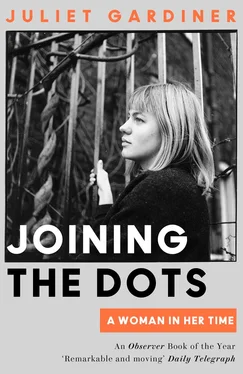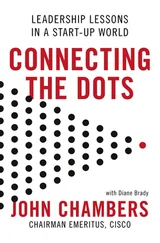The ambivalent adjustment to peace could be seen in the faces of the demobilised fighting men, as they exchanged their khaki or blue uniforms for ill-fitting suits. Many of the jobs they’d left when call-up papers arrived had disappeared, despite promises they would be kept open for them when they returned from the war. The workplace had changed, new skills were needed, and the colleagues who’d remained at home had overtaken them. Many women, while thankful to have husbands home again, were uneasy about having to relinquish the head-of-household role they’d been obliged to assume and to have their decisions questioned, their independence compromised. Those women who would have liked to continue to work outside the home found formidable barriers in the way: priority was given to men when it came to job vacancies; the nurseries set up during the war to enable women to work were peremptorily closed down, like theatre cloakrooms when the performance was over.
In addition, husbands often disapproved of their wives working, and a slew of childcare ‘experts’ pronounced on the damaging effects of maternal deprivation, insisting that mothers should remain at home, nurturing, caring. It was a measure of the largely unwelcome return to pre-war convention that women who had driven ambulances, heavy lorries and jeeps during the war were not expected to get behind the steering wheel of the family car. Fathers drove while their wives sat in the passenger seat, forced to read the map and give their husbands directions.
Both women and men came to miss the unexpected pleasures of war: the intense ‘live now for today for tomorrow you may die’ mentality that had led to transitory passions and fleeting, often illicit, affairs. Women yearned for the near-Hollywood glamour that one and a half million GIs from the United States had brought to Britain from 1942 until the attack on ‘Fortress Europe’ on D Day. They missed the catchy, energetic beat of the imported American music and the invitations to US bases where, with any luck, Glenn Miller might be leading his orchestra on the trombone. Those dances – the Lindy Hops and Jitterbug Jives – were a world away from the sedate waltzes and foxtrots of formal occasions, or the jolly, communal country dancing in village halls up and down Britain.
As the euphoria of victory flattened, diarist Madge Martin felt guilty that though she dutifully attended the harvest festival in her husband’s church, she found no pleasure in the display of nature’s mellow bounty.
In Barrow-in-Furness in northwest England, the middle-aged Nella Last, who had found a new confidence and purpose in her wartime work with the Women’s Voluntary Service, wondered what she could do now that there was no need to raise money for the war effort, serve tea and buns to war workers, or provide clothes and comforts for the troops and refugees. Was her life to revert to looking after her uncommunicative, stick-in the-mud husband, tending her garden, and polishing the brass ornaments in her house until they gleamed?
II A Child’s War
As a small child I of course had no reference point for pre-war or for the war. I missed neither white bread nor the choice of shampoos. I presumed that it was normal to carry, snail-like, an edited version of your home around with you, taking aspirins and sticking plasters in a sponge bag; cotton, needles, matches, batteries and string in an empty waxed cardboard Meltis Fruit Jellies box, in case these were unobtainable on your travels.
Hertfordshire, the county in which I was brought up, had been designated a ‘neutral’ area during the war, one that neither sent nor received evacuees under the official government scheme, though of course many private arrangements were made ‘to get the children away’ from designated danger zones. Some stray bombs had fallen not far from my home, evidenced by craters in the roads or fields, some of which were absorbed into the landscape as ponds. By the time I was born, virtually no one carried a gas mask anymore and the Anderson shelters were gradually colonised by weeds and brambles.
I had few toys and those I had were invariably hand-me-downs from my parents and often incomplete: lead farm animals with matchsticks for legs, Dinky cars with a wheel missing. A home-made stockinet rabbit I called Tipsy was a particular companion that I pushed around in a wooden box on wheels for a pram. But I was not aware of the absence of the playthings that might have filled a middle-class child’s toy cupboard in the 1930s.
There are a few reminders of war, however, that I do recall from those early postwar years. One was the evidence of destruction on trips to London, when my mother and I went shopping or visited the Wallace Collection at Hertford House, which was my mother’s favourite cultural venue. She loved the domestic interiors by Dutch and Flemish artists such as Vermeer and Pieter de Hooch and found it convenient that it was just round the corner from Selfridges, and a couple of bus stops away from Daniel Neal’s in Kensington for Start-rite shoes, liberty bodices, fawn knee socks and navy knickers for me.
Nothing was whole anymore, or so it seemed. Many buildings were nothing but facades; others had tarpaulins stretched and lashed down to serve as roofs; windows were boarded up, or just left as holes in the brickwork. There were sudden gaps in terraces of houses or parades of shops. Stretches of Oxford Street were like a Wild West boardwalk, and looking in the windows of John Lewis’s department store which had been all but razed to the ground on 18 September 1940 was like peering into an aquarium: a narrow rectangle of glass behind which whatever paucity of merchandise was available could be glimpsed. In February 1946, Vogue was thrilled to report that ‘Dickins & Jones [in Regent Street] are soon to have their plate-glass windows restored,’ although what would be displayed in them was anyone’s guess.
Rationing affected me consciously not at all. I had no pre-war abundance with which to compare the shortages, so the leather-hard liver (offal was not rationed), the tasteless mince eked out in a sea of imperfectly mashed lumpy potatoes, the slightly muddy, undersized carrots from the garden, were what I expected to be served – and was. I was unquestioning of the eggs stored in isinglass (made from fish bladder) in the larder; oblivious to the fuss made when the import of dried eggs from the US was temporarily banned; non-complicit in the illegal acquisition of butter and cream from a local farmer. It was not until sweets came ‘off the coupon’ in 1949, only to go straight back on again since the demand was so heavy it could not be satisfied, that rationing impacted on me. I had spotted something I liked and pointed to it, only to discover that chewing gum was not the nougat I had imagined it to be.
The other subtler memory is of class, which I could neither conceptualise nor name as such at the time. I recall very well the gossip that I would later recognise as disquiet that class , and thus power relations, had been turned upside down during the war – and the implacable determination to set them to rights again. In my mother’s view – and she was not alone in this – shopkeepers had become very ‘uppity’, reserving special goods on points, keeping the occasional few oranges under the counter for favoured customers. Such retailers seemed to regard the long queues that formed outside shops as their personal supplicants. The grocer who weighed out sugar in blue paper bags, scooped biscuits from glass-topped tins, sent his delivery boy round weekly on his bicycle with my mother’s order of rashers of streaky bacon and a box of Post Toasties cereal, must have realised that as ration books disappeared, his control was ebbing. The customer was again king (or rather queen) and had a choice of shops to patronise. The half-crown or capitalist ten-shilling note became the only currency of exchange required, instead of the government-issued ration book to be stamped.
Читать дальше












